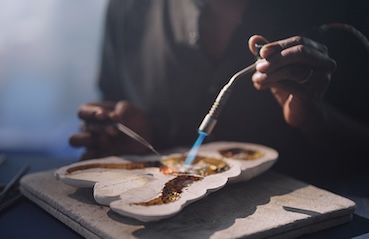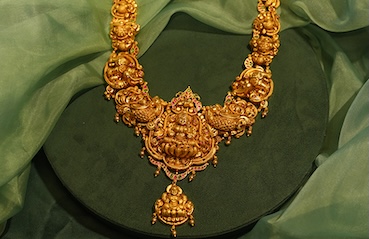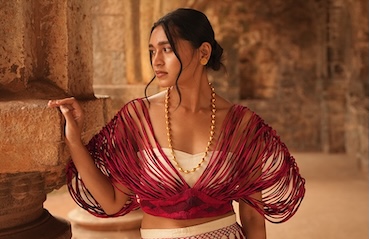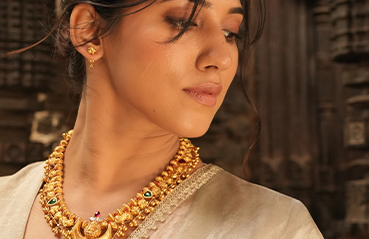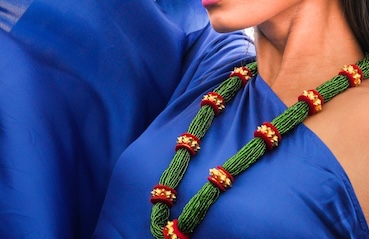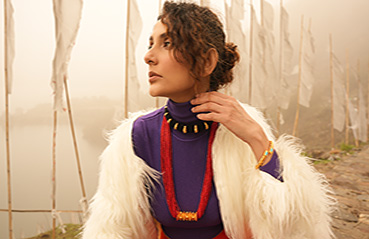Published: 30 Apr 2024
The Art of Making Sikkim's Traditional Jewellery
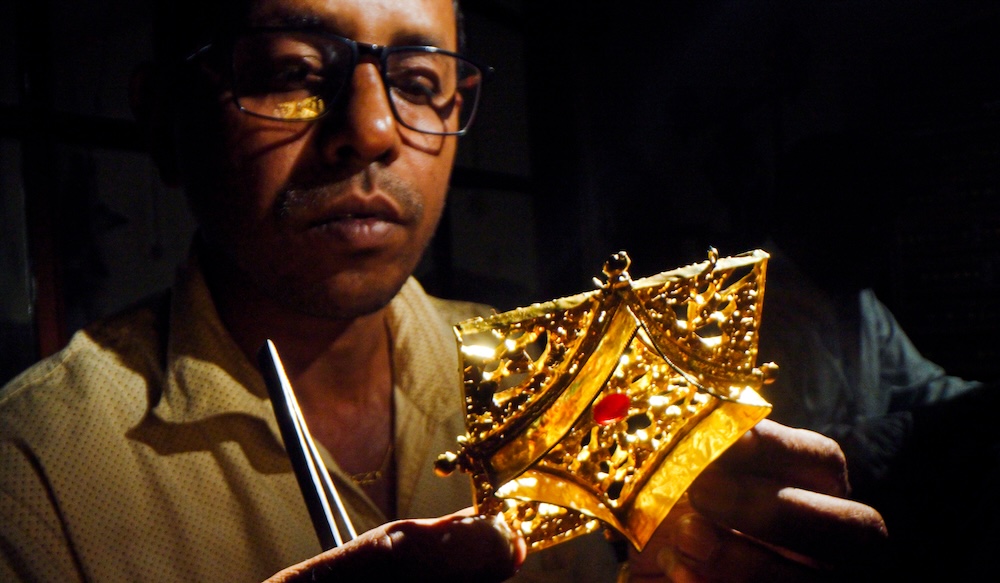
Sikkim Jewellery Making
Sikkim, also called the ‘brother of the seven sisters’ in the Himalayas, is home to scenic vistas, an alpine climate, and biodiversity. From vibrant folk dances to delectable cuisine, this tiny state never ceases to amaze.
Sikkim jewellery is a unique blend of traditional and contemporary styles, influenced by the fusion of artistic styles, motifs, and design principles from diverse ethnic groups such as the Bhutia, Nepali, Lepchas, and others. The making of Sikkim jewellery takes meticulous crafting by skilled artisans, each piece showcasing intricate designs that reflect the region's rich cultural heritage. From elaborate neckpieces to intricate earrings and bracelets, Sikkimese jewellery symbolises the cultural fusion that defines this Himalayan region.
Colourful necklaces beset with gold and gemstones, highly detailed bracelets, intricately carved rings, and more, each ornament has a story woven into it, one that has evolved over generations.
1. Design and inspiration of Sikkim jewellery:
The process starts with conceptualising a design. Sikkimese love nature and strongly believe in spirituality. Thus, the primary designs are based on flowers, leaves, and animals that often have spiritual significance. The state has strong Tibetan and Bhutanese roots, which can be seen in the patterns carved into the jewellery. These are referred to as Thangka art - a form of painting and designing followed in Buddhism. The design of the ornament determines the occasion of the jewellery - whether it is for a marriage or some other special occasion.
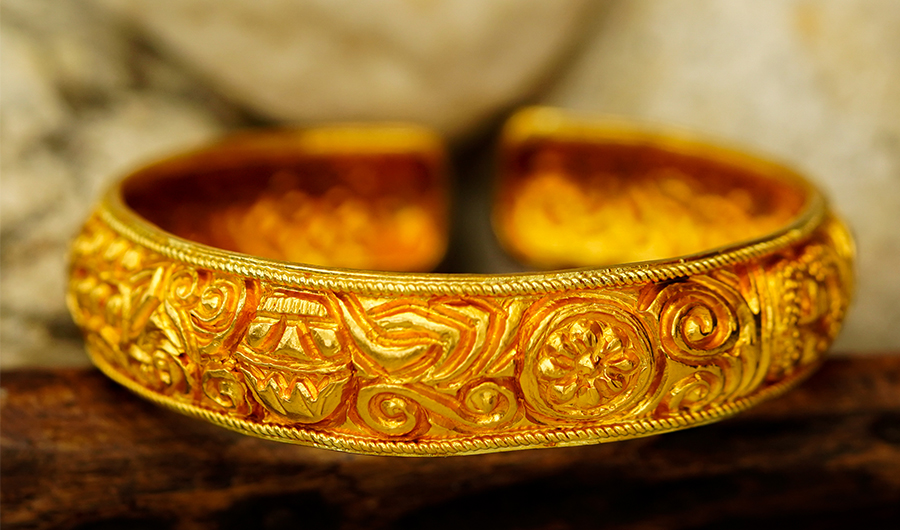
The Bhutia Bangle is a classic example of traditional Sikkimese jewellery with 8 auspicious symbols referred to as ‘Ashtamangala’ carved on it. The lucky signs on the bangle are Shankha (conch shell), Srivatsa (endless knot), Chatra (parasol), Matsya (golden fish), Dharmachakra (dharma wheel), Padma (lotus), Dhvaja (victory banner), and Kalasha (treasure vase).
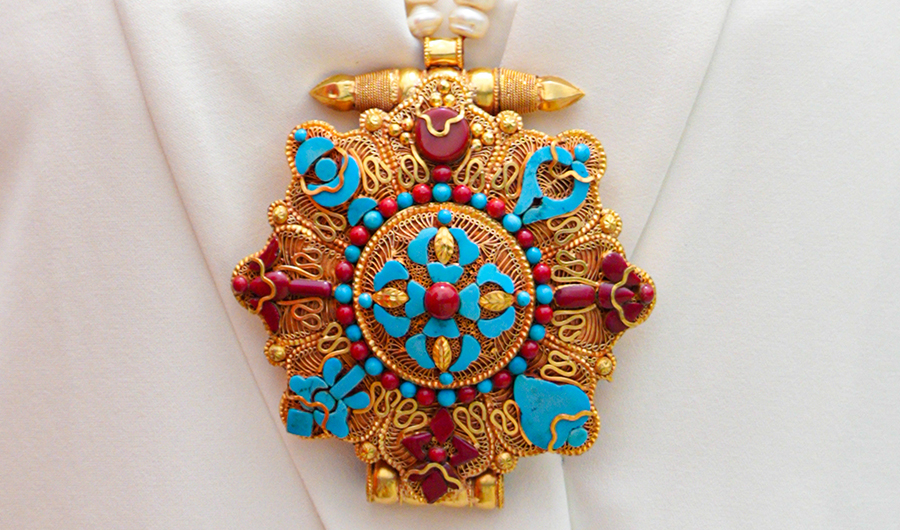
The Khao pendant is a popular traditional piece of jewellery Bhutia women wear. It symbolises love, commitment, prosperity, and purity. The pendant is made of gold, featuring semi-precious gemstones and intricate filigree work. In the past, it was designed in a box shape that was meant to contain a special amulet given to tribal warriors to protect them during wartime. Later, a monarch wished for a more modern and simpler design with an abstract motif like the ‘Mandala’ to represent their religious beliefs. There are two versions: one made of gold and the other of corals. This pendant has motifs depicting nature and the ‘Ashtamangala’.
2. Materials used in Sikkim jewellery:
The materials used for jewellery making are carefully selected. The most commonly used metal is 22-24 karat gold. Gemstones like turquoise, lapis lazuli, and red coral are added for spiritual reasons. Enamel work brings life to these motifs and patterns on the ornaments.
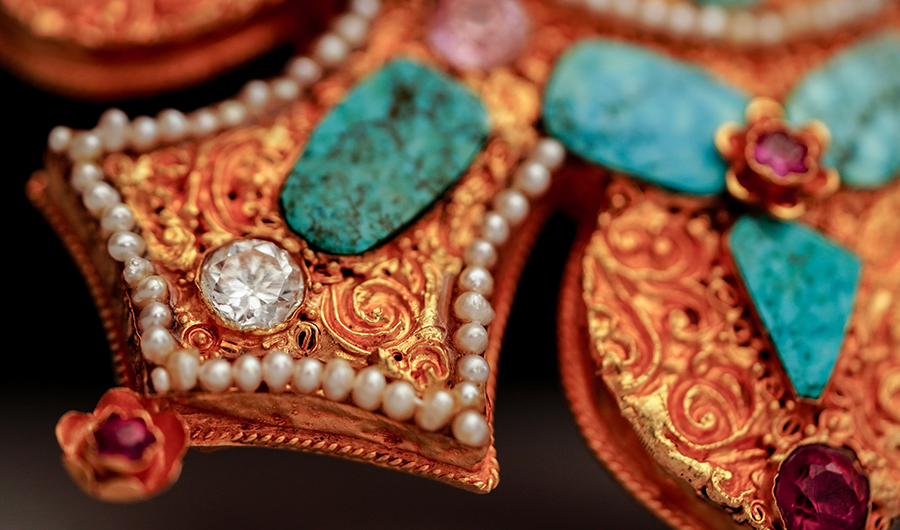 Gold and gemstones like turquoise and red coral are used in these ornaments.
Gold and gemstones like turquoise and red coral are used in these ornaments.
Some are special forms of jewellery like 'Kantha' and 'Naugedi' that celebrate the art of weaving. Kantha is a necklace made of gold thread that is artfully woven into a luxurious piece to be worn with an elegant ensemble. 'Naugedi' (Nau means nine, a number that is a strong symbol of cultural identity) is a bracelet made of nine braided gold threads and is as unique as it is exquisite.
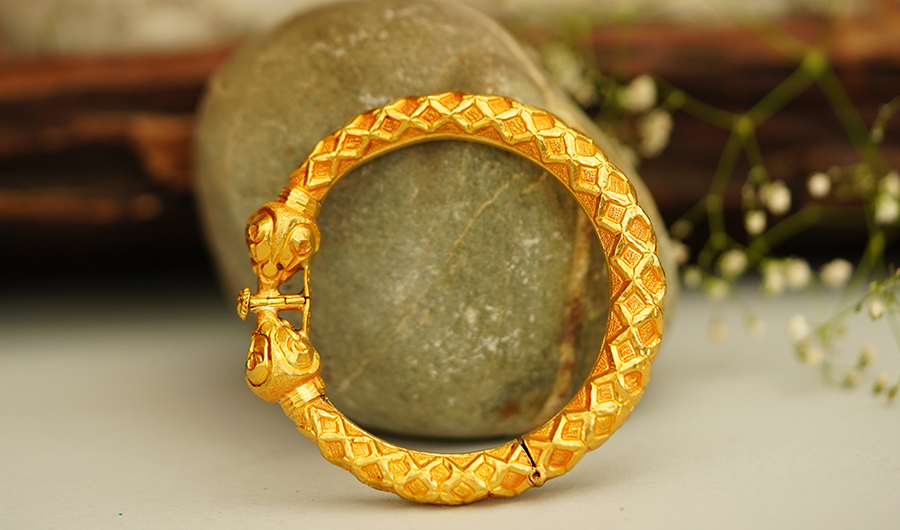 The dragon-inspired Nepali bangle is generally made of gold. The design is crafted to depict dragon motifs, a powerful mythical creature symbolising strength and protection.
The dragon-inspired Nepali bangle is generally made of gold. The design is crafted to depict dragon motifs, a powerful mythical creature symbolising strength and protection.
3. Traditional methods passed down through generations
Hand crafting and filigree work are some of the traditional techniques of jewellery making along with engraving, hammering, and etching. Wax carving Khao is a cultural mix meticulously crafted in traditional methods like filigree and the hand engraving of delicate details on an ornament.
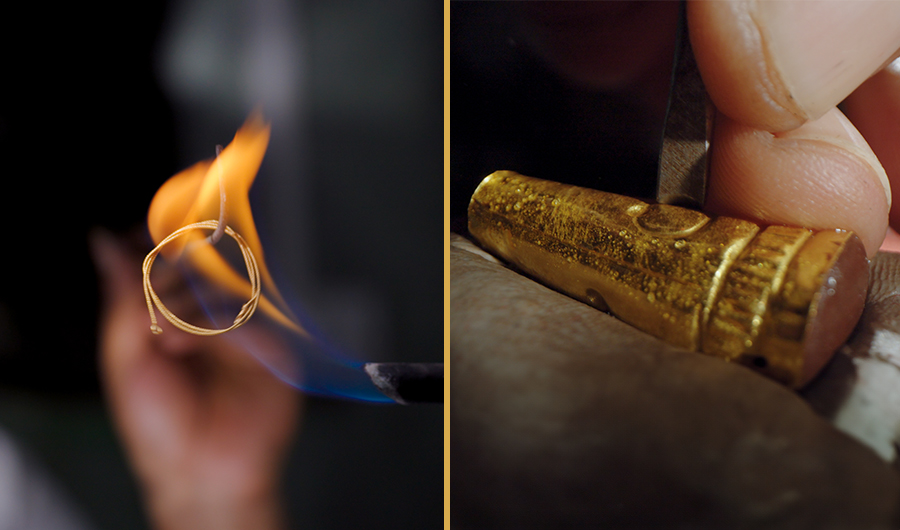
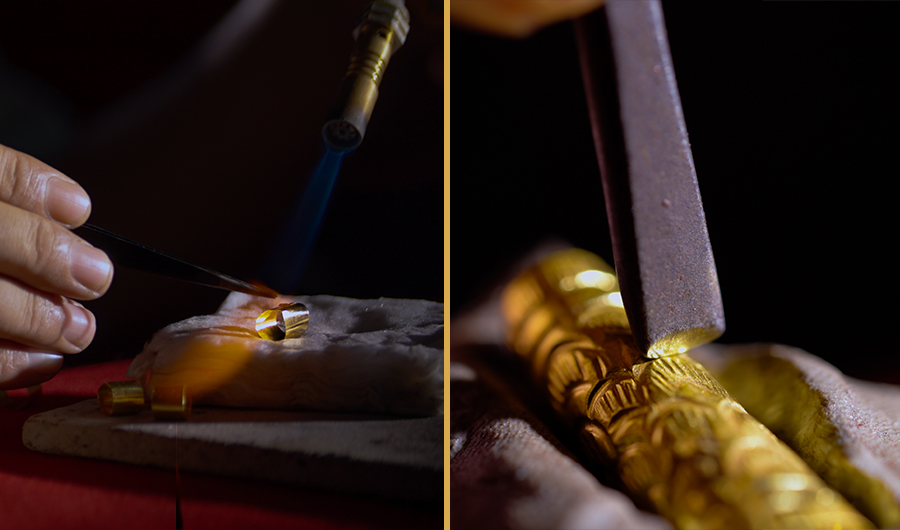
4. Casting and carving of the metals:
Skilled artisans are required for this task where a mould is formed for the prototype and molten metal is poured into it to form the required shape of the ornament. The metal is cooled to form the base of the jewellery. Most Sikkimese jewellery is crafted from gold, studded with precious gemstones and glass beads.
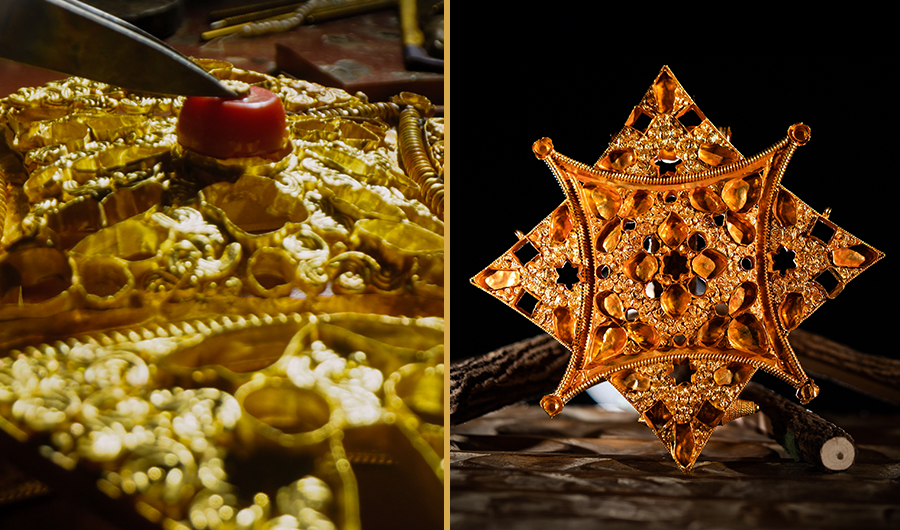 Each ornament is crafted intricately by highly skilled artisans.
Each ornament is crafted intricately by highly skilled artisans.
5. Assembling and finishing of Sikkim Jewellery:
After the molten metal takes shape, chains clasps, beads, gems, and enamel work are added ending the procedure with polishing to bring out the shine of the ornament. Craftsmen use various methods like prong and bezel settings for securely placing the gemstone on the metal.
Some other precious and crafter jewellery are:
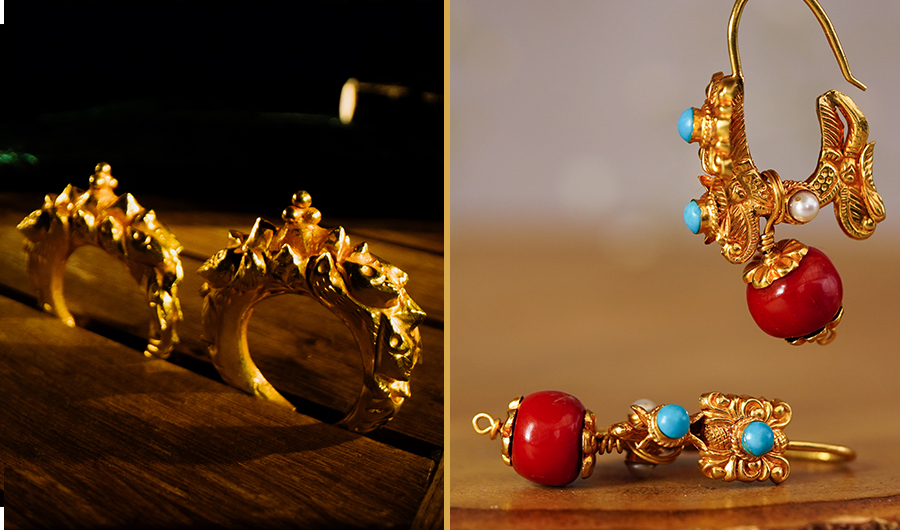 (Left) Fire inspired Nepali Marwari earring, and (Right) Dragon inspired Bhutia earring ‘Aalong’.
(Left) Fire inspired Nepali Marwari earring, and (Right) Dragon inspired Bhutia earring ‘Aalong’.
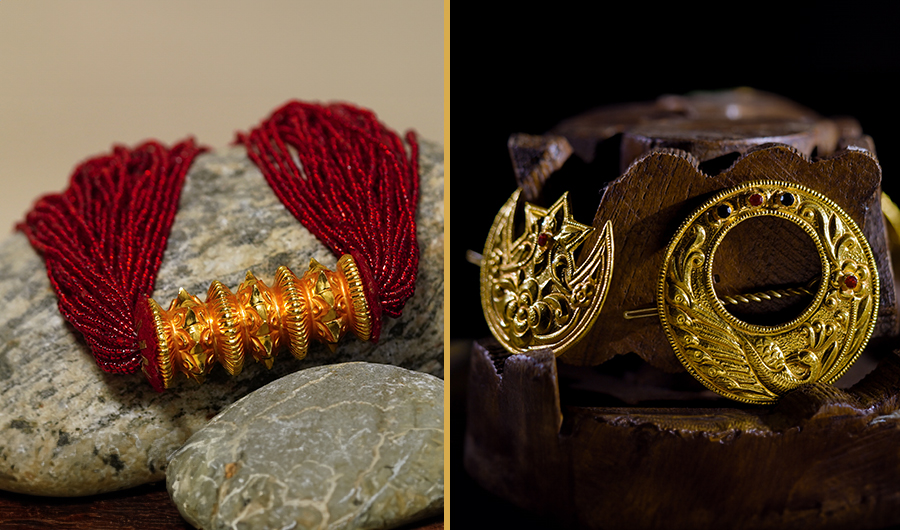 (Left) Spindle inspired Nepali ‘Tilhari’, and (Right) Nature inspired Nepali Hairclip.
(Left) Spindle inspired Nepali ‘Tilhari’, and (Right) Nature inspired Nepali Hairclip.
Every piece of jewellery goes through strict quality control procedures which is an essential part of the process. Artisans themselves inspect every ornament checking for flaws and defects.
Sikkimese jewels are fascinating. Each piece of jewellery is meticulously handcrafted and has historical significance. The Sikkimese speciality in metal casting and their preference for turquoise and red coral (for spiritual reasons) add to the charm of each piece of jewellery.
Sikkimese jewellery is abundant in spirituality, rich in diversity and intricately crafted to pay tribute to nature, heritage and the region’s cultural identity.
